

Beacon Press
25 Beacon Street
Boston, Massachusetts 02108-2892
www.beacon.org
Beacon Press books
are published under the auspices of
the Unitarian Universalist Association of Congregations.
2013 by Susan Katz Miller
All rights reserved
Printed in the United States of America
This book is printed on acid-free paper that meets the uncoated paper
ANSI/NISO specifications for permanence as revised in 1992.
Text design and composition by Kim Arney
Bill of Rights for People of Mixed Heritage, by Maria P. P. Root,
PhD. Copyright 1993, 1994, by Maria P. P. Root, PhD.
Reprinted here with permission.
Library of Congress Cataloging-in-Publication Data
Miller, Susan Katz.
Being both : embracing two religions in one interfaith family / Susan
Katz Miller.
pages cm
Includes bibliographical references and index.
ISBN 978-0-8070-1319-9 (cloth) ISBN 978-0-8070-1320-5 (ebook)
1. Interfaith familiesUnited StatesReligious life. 2. Interfaith
marriageUnited States. 3. Children of interfaith marriageUnited
States. 4. FamiliesReligious lifeUnited States. 5. Jewish families
United StatesReligious life. I. Title.
HQ1031.M55 2013
306.843dc23
2013023147
For my loving interfaith family:
My parents, William and Martha
My husband, Paul
My children, Aimee and Ben.
And for Reverend Julia Jarvis and Rabbi Harold White,
my pastor and my rabbi.

INTRODUCTION
The Kaleidoscope
E ACH YEAR, MY EXTENDED clan gathers for a huge Passover seder in Florida. My eighty-eight-year-old father presides over the ritual meal, leading us through the prayers and songs of religious freedom. The family at the table includes believers, seekers, and secularists, Jews, Catholics, Protestants, Buddhists, and those who claim interfaith identity. A Jewish nephew who is about to become a bar mitzvah and a Catholic nephew who just received First Communion compete with my interfaith son to find the traditional hidden matzoh. We are a joyous, motley crew, intent on celebrating together.
In twenty-first-century America, we live in a kaleidoscope of religious identities: complex, swirling patterns of faith, spirituality, heritage, and practice. Many of us attend more than one place of worship. We change our religions more than once in a lifetime. We may believe in God or not but still seek spiritual experience inside and outside of churches, synagogues, mosques, and temples. And we are marrying across traditional lines of race, ethnicity, gender, and religion.
In the midst of this religious flux and flow, interfaith couples are making a new and controversial choice: raising children with both family religions. As an interfaith child and an interfaith parent, I feel exhilarated by this new fluidity, empowered by the transition away from restrictive either/or identity labels and into the inevitable and more expansive both/and future.
Americans are leaving behind traditional single-faith identities. Almost a quarter of us attend religious services of more than one faith or denomination, according to a 2009 study by the Pew Forum on Religion and Public Life. The religious beliefs and practices of Americans do not fit neatly into conventional categories, that study concludes. At the same time, according to Pew researchers, more than one in four American adults change faith affiliation at least once, and that rises to almost half of us if it includes denomination changes (for instance, from Lutheran to Methodist).
Meanwhile, the proportion of religiously unaffiliated Americans has grown rapidlyto almost 20 percent of the population. And yet, the majority of those 46 million unaffiliated adults believe in God or a universal spirit. This seeming paradoxbelief in God without religious affiliationwill not come as a surprise to those in interfaith families, many of whom have rich spiritual lives but do not belong to a church or synagogue. My family would be classified as religiously unaffiliated, even though we light Shabbat candles on Fridays, sing Christian hymns in church with extended family, and wrestle with theology as we educate our children in both religions.
I am not advocating for a spiritual but not religious rejection of community. The hunger for community, for belonging, is universal. As human beings who evolved in clans and tribes, we crave social networks. Religious community provides intergenerational bonding, the support of wise clergy, preservation of our shared history and texts, and the comfort of ritualnot to mention the arrival of casseroles in times of trouble.
I argue here that it is not necessary to share a single faith in order to share such benefits. In fact, I contend that it is indeed possible to raise children with two religions, and that both couples and children experience the distinct benefits of this choice. This book describes a grassroots movement of interfaith families claiming the right to create their own communities beyond a single creed or dogma, bound instead by respect for both Judaism and Christianity and a desire to explore the similarities, differences, and points of historical and theological connection. In these pages, I seek to answer three questions about this movement: Why are intermarried couples choosing two religions for their children despite pressure to choose only one? What are the benefits and drawbacks of raising children with both family religions? And how do these children feel, as they enter adulthood, about their interfaith education and complex religious identities?
Growing up Jewish, I learned that no choice made by parents can eliminate completely either the challenges or the gifts of being born an interfaith child. Each pathwaychoosing one religion, choosing two religions, choosing a third religion, choosing no religionhas advantages and disadvantages. Books, outreach programs, and couples groups sponsored by religious institutions push, with varying degrees of subtlety, for couples to choose a particular pathway. Here, I acknowledge my own bias as I argue for the legitimacy of the pathway that works for me, my husband, and my children: doing both.
Clergy often state that children raised with two faiths will be confused. The scant evidence they cite dates from an era when there were no interfaith communities. Some of those who claimed they were raising children with both religions were actually raising them with very little religion at all, in part because society disapproves of choosing both. Extended family mourned for the intermarried couple; clergy rejected them. In short, many early attempts to raise children in two religions were doomed by lack of support.
A child raised in a community of supportive interfaith families, with clergy from both traditions, has a very different experience from a child raised by parents who are isolated by their interfaith choice. My own two teenagers have been loved, challenged, and guided by a rabbi and a minister working as a team. And they have been welcomed at church and synagogue by family on both sides. This book presents preliminary evidence that children raised in interfaith family communities can become sensitive and articulate interfaith spokespeople, drawing strength from two religions.
WE ARE ALL INTERMARRIED
Whether Jews or Christians or Hindus or Buddhists, no two individuals have identical beliefs and practices; thus, every marriage could be considered an interfaith marriage. Many interchurch couples share some of the same challenges and benefits of intermarriage, whether the marriage is Baptist/Quaker, Lutheran/Unitarian, or whether its an inter
Next page
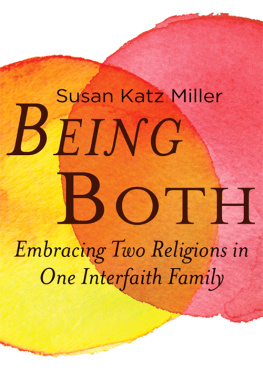

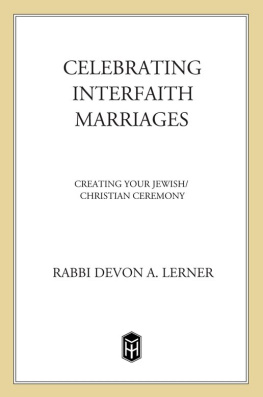


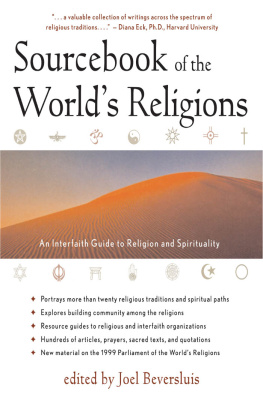
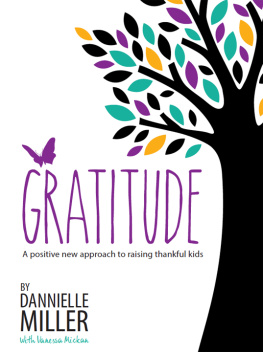

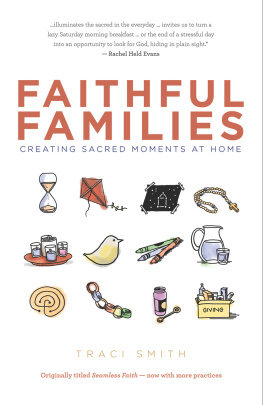
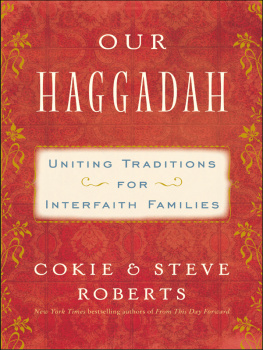
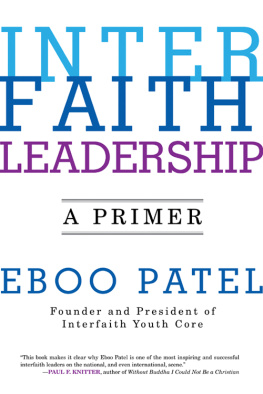


 INTRODUCTION
INTRODUCTION